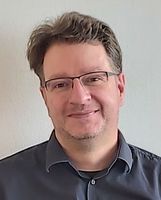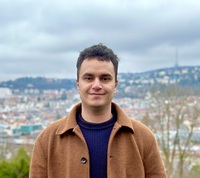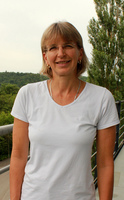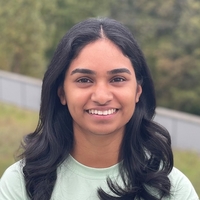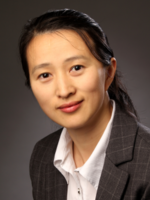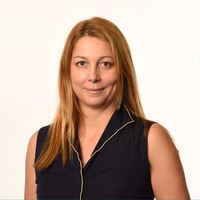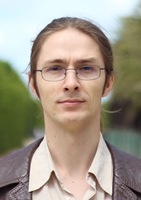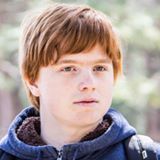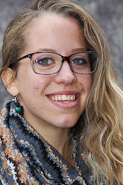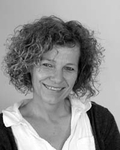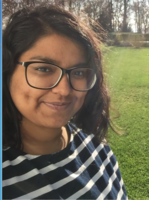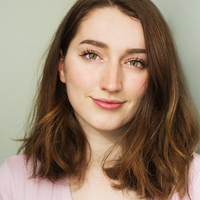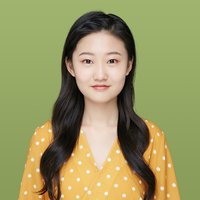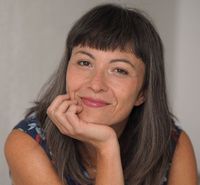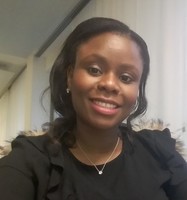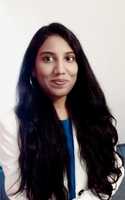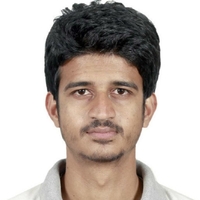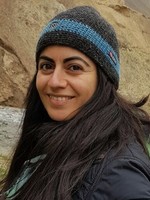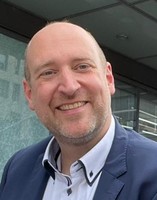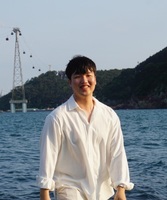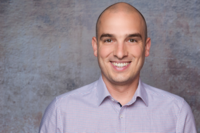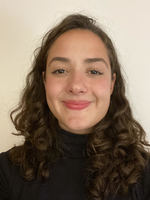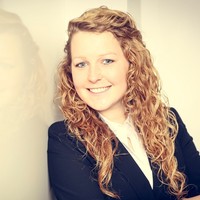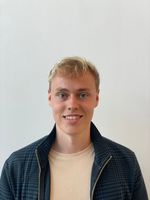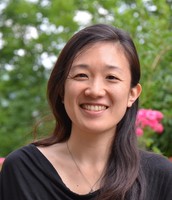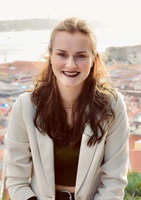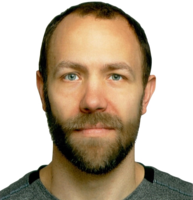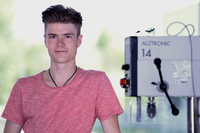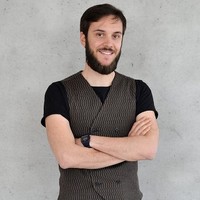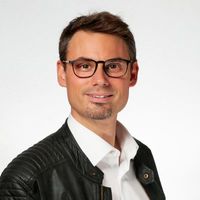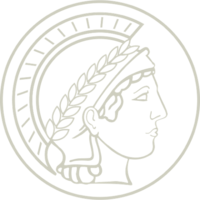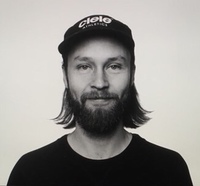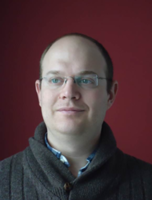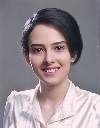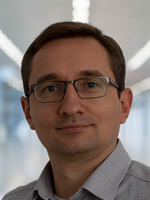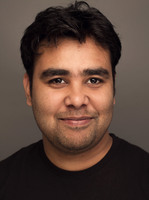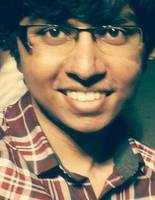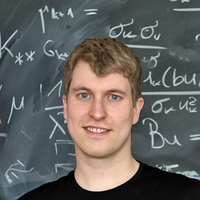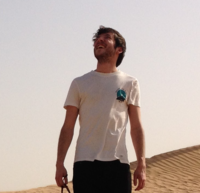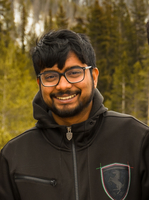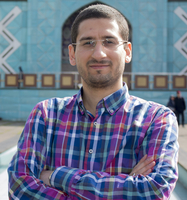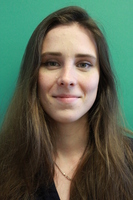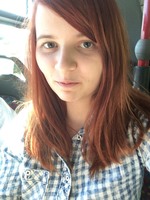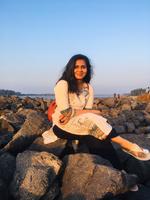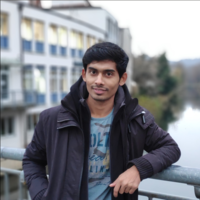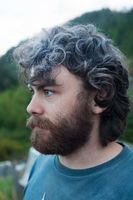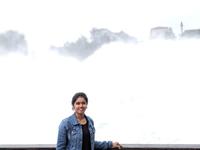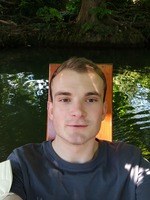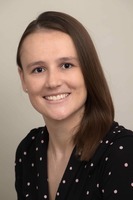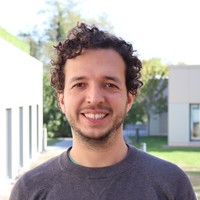Scientific Facilities
In addition to the departments we are building shared central scientific facilities and workshops:
Animal Facility
<p>A team of experienced veterinarians and animal keepers provides expert medical care and housing in our animal facilities. The Max Planck Society as well as the scientists, veterinarians and animal keepers take their responsibility for the performance of animal experiments as well as the appropriate housing of the laboratory animals very seriously. This is not only because it is impossible to obtain meaningful scientific findings without healthy and unstressed animals.</p> <p><strong>Rats and mice</strong></p> <p><img alt="" src="/uploads/ckeditor/pictures/1713/content_5DIV1246.jpg" style="width: 800px; height: 533px;" /></p> <p>The mice and rats in our research facilities are normally kept in groups, which corresponds to their natural social lifestyle. They live in single-ventilated IVC cages equipped with bedding, nest-building materials, and a tube or house, because rodents naturally love to hide. Lighting simulates the change from day to night. Mice are skilled climbers and not only use the cage floor, but can also hang upside down on the bars of the cage cover. Both rats and mice like to cuddle up with their conspecifics.</p> <p><strong>Zebrafish</strong></p> <p><img alt="" src="/uploads/ckeditor/pictures/1715/content_5DM41607.jpg" style="width: 800px; height: 533px;" /></p> <p>Zebrafish grow up in petri dishes during their first days of life. During this time, the fish larvae are not yet fed, but feed on the yolk sac with which they were born. After about seven days, they are transferred to larger aquaria. Over time, the water flow is increased more and more, as the tiny larvae are not yet able to fight a strong water flow. At the age of three to four months, they then move from the baby room to the holding room for the adult fish. Zebrafish live in a loose association of fish and should therefore be kept in schools. In the 3.5 to 12 liter aquariums, the up to 5-6 cm large fish have about 200 ml of water per individual available. In the wild, the animals usually live about one year, in captivity two years or older.<br /> </p>
No employees found
Biological and Chemical Laboratories
<h2><strong>The Chemical and Biological Laboratories</strong></h2> <p>The chemical laboratories are equipped with all routine tools for chemical synthesis (hoods, hydrogenation apparatus, freeze dryer etc.). Two manual as well as a fully automated peptide synthesizers for solid phase synthesis of cell penetrating peptides and peptide nucleic acids can be used. The analytical laboratories house a LC-MS unit (ESI ionization) and two systems for analytical and preparative HPLC, a fluorescence/luminescence spectrometer as well as a 300 MHz (7T) NMR spectrometer. </p> <p><img alt="" src="/uploads/ckeditor/pictures/1697/content_ChemLab2.jpg" style="width: 800px; height: 446px;" /></p> <p>The cell biology laboratories are equipped for cell culture work with two laminar flow, two CO2-incubators, and a routine inverse brightfield microscope with fluorescence unit and camera. Two research microscopes are also available. One is based on extreme darkfield microscopy optimized for real time life cell imaging and is connected to a high resolution colour video camera. The other inverse microscope is equipped with an optical grid, motorized focus and a high end black-and-white digital camera. It allows the recording and reconstruction of high resolution 3D fluorescence images from cells or tissue slices. Both microscopes are used to study uptake mechanism, fate and intracellular localization of contrast agents. The labs are used to perform various kinds of cell biological assays and are equipped e.g. with centrifuges, electrophoresis units and a multiplate reader primarily used for absorption and fluorescence spectroscopic studies on the internalization of the contrast agents into cells as well as on their biocompatibility.</p> <p><img alt="" src="/uploads/ckeditor/pictures/1692/content_ChemLab1.jpg" style="width: 800px; height: 441px;" /></p>
No employees found
Brain Imaging Facility
<h2><strong>9.4 T MR whole body system</strong></h2> <p>For the investigation of the reaction of the brain to different kinds of stimulation, the scanner is equipped with a visual, auditory and tactile stimulation system. The optical stimulation setup for functional MRI and functional MRS available at the 9.4 T human MRI scanner consists of a projector and a mirror system combined with stimulation software.</p> <p><img alt="" src="/uploads/ckeditor/pictures/1708/content_4096-2730-max.jpg" style="width: 800px; height: 533px;" /></p> <p>Due to the increased signal-to-noise ratio it is possible to acquire functional and anatomical images of the human brain with sub-millimeter spatial resolution. For this reason, the limiting factor of the resolution often is the motion of the subject. Even with careful padding, smallest displacements due to breathing or heartbeat cannot be avoided. To overcome this problem, we are using a motion tracking system from Kineticor. It consists of a camera mounted in the scanner bore and a moiré phase marker attached to the subject’s head. The system has a tracking precision of up to 10 µm / 0.01° at a frame-rate of 80 Hz. The recorded subject motion is used to adapt the image slice position and orientation in real time during the experiment.</p> <h2><strong>14.2 T small animal system</strong></h2> <p>This scanner was delivered in August 2007 with a field strength of 16.4 T, at that time the strongest field in a horizontal MRI instrument worldwide. The magnet was built by Magnex (Oxford), the MR hardware was delivered by Bruker Biospin in Ettlingen. After four years of successful operation, it was damaged by a quench in October 2011, and had to be sent to Oxford for repair. Since August 2013 the scanner is back in service, now with a reduced field strength of 14.1 T. It is equipped with gradients that are able to reach a strength of 1 T/m within 181 µs and a high-performance shim system with nine first and second order shim channels. Its inner diameter of 12 cm makes it possible to insert extensive equipment for brain stimulation or multi-modality experiments or to examine even larger animals like small monkeys.</p> <p><img alt="" src="/uploads/ckeditor/pictures/1711/content_4096-2731-max-4.jpg" style="width: 800px; height: 533px;" /></p> <p>Recently, the spectrometer hardware was upgraded to the current Bruker Neo system and is now running ParaVision 360, allowing to perform dual-channel pTx and dynamic shimming. A wide variety of homebuilt MR-coils includes surface coils for rat brain imaging, large quadrature transmit/receive birdcage coils for investigating samples or entire rats, or double-tuned transmit and receive coils for deuterium imaging.</p> <h2><strong>3 T MRI whole body system</strong></h2> <p>The clinical 3 T scanner is based on a Siemens Trio magnet, upgraded to a state-of-the art Siemens Prisma system. It has a bore diameter of 60 cm and is capable of signal reception on 64 channels simultaneously for parallel imaging. The gradients have a maximum strength of 80 mT/m with a slew rate of 200 T/m/s and are equipped with a 2<sup>nd</sup> order shim system. Due to the high gradient fidelity, it is also well suited for diffusion weighted MRI. In addition to projects from our department, this scanner is used extensively for functional imaging studies performed by other groups from our institute as well as external collaborators from the University of Tübingen.</p> <p><img alt="" src="/uploads/ckeditor/pictures/1706/content_4096-2731-max-2.jpg" style="width: 800px; height: 533px;" /></p> <p>The 3T laboratory is equipped with state-of-the-art stimulation systems for investigation of visual, auditory and tactile senses by use of functional magnetic resonance imaging techniques. Additionally, the scanner can be combined with an MR compatible EEG System (Contact Precision Instruments, London, UK) allowing simultaneous acquisition of EEG and functional magnetic resonance data.</p> <h2><strong>The Coil Laboratory</strong></h2> <p>Experiments with the ultra-high-field scanners are enabled by homebuilt rf-coils, preamplifiers and T/R-switches. This hardware is designed and constructed in our coil laboratory, equipped with two network analysers, a noise figure analyser, a spectrum analyser and a shielded box for noise figure measurements.</p> <p>In addition, several software Packages for simulation of coils (XFDTD, Remcom; SEMCAD, Speag; Microwave Studio, CST) and preamplifiers (Microwave Office, Applied Wave Research, El Segundo, CA, USA) are available.</p> <p><img alt="" src="/uploads/ckeditor/pictures/1712/content_HeadcoilLab.jpg" style="width: 800px; height: 447px;" /></p> <p> </p>
No employees found
Communications Core
<p>The Communications Core supports both internal and external communications per annual strategy. Its members are responsible for media relations, graphic design, podcast and video production, social media, event management, media training and strategy development.</p> <p>In regular exchange with our scientists, the Communications Core translates scientific discoveries into comprehensible and visually appealing information, including regular reports on the latest scientific publications, awards and grants, portraits of scientists. This includes social media campaigns, mostly in the wider context of special daily and weekly topics. Moreover, the team established a YouTube video series which is explaining science in a nutshell, presented by scientists themselves. In late fall 2021, they started with the production of a regular audio podcast series which is to increase the engagement with our broad communities, by building trust and authority, insight and understanding. </p> <h3><strong>External communications</strong></h3> <p>Due to digital platforms have remarkably increased the number of communication channels, our integrated communication approach enables us to deliver cohesive messages to engage audiences, and to build and sustain trust amongst the various target groups. Our external communication activities intend to create an authentic connection to our science, for example, by providing insights to people behind their work, and by explanatory content in various forms of audiovisual information. <br /> <br /> In parallel, we do regular press relations by communicating to international journalistic media and, in cooperation with the central communications department in Munich, publish our news and stories in the Max Planck Society’s central newsroom and its social media offering. Sound and media bites are generated through interviews given by our scientists in their role as experts, commenting on current research policy and recent scientific developments and contributing to events for the general public, available through newspapers, magazines, online publications, radio and TV reports.</p> <p><img alt="" src="/uploads/ckeditor/pictures/1717/content_DigitalMedialllustration.jpg" style="width: 800px; height: 451px;" /></p> <p><em>The Communications Core invested major efforts in digital media and ramped up activity on Twitter, Instagram, YouTube, Facebook and LinkedIn. </em></p> <h3><strong>Digital media</strong></h3> <p>The Communications Core uses a broad array of digital media to drive general awareness and a wider audience reach. The team invested major effort in video-based content, followed by a regular podcast series which started in late fall 2021. The video series is about various fields of research at the Max Planck Institutes in Tübingen, concentrating on individual researchers´ who are to provide insights into their manifold work and to make broader audiences understand what is going on behind the walls.<br /> <br /> The team refined its regular social media activities which now follow a fixed day-to-day scheme of news, educational information, people insights, and event information by using eye-catching visuals. Moreover, the expansion of channels and platform now allows a more specific address of our research to targeted groups. Our fastest growing channel is Instagram with an average of 100 new followers per month. Next is Twitter with over 60 new users every four weeks. </p> <h3><strong>Internal communications </strong></h3> <p>The success of our institute rests on its scientists, but a motivated, well-informed and cooperative workforce as a whole is equally critical. In the area of internal communications, an intranet wiki and individualized newsletters have replaced the format of a formerly printed bulletin for the Max Planck family members on the Tübingen campus. Especially during the pandemic, it was essential to disseminate information quickly and in a focused manner via dedicated websites on the latest federal and institutional measures. Virtual town hall meetings, which were held by the Managing Directors in regular intervals, helped to share important information and news from the institutes. </p> <p><img alt="" src="/uploads/ckeditor/pictures/1730/content_IntranetIllustration.jpg" style="width: 800px; height: 451px;" /></p> <p><em>Our local intranet follows the idea of a corporate wiki, realized with Atlassian Confluence, seamlessly linked with the intranet ´Max´ of corporate headquarters. </em></p> <h3><strong>Welcome office</strong></h3> <p>The Welcome Office of the institute is one vibrant part of the Communcations Core. Our Welcome Officer takes on a guiding function for new employees, in close cooperation with national and international bodies. In addition to comprehensive advice for researchers from Germany and abroad, the Welcome Office also offers central services in relation to the preparation of research stays at our institute. Together with the administration and the contact persons in our scientific departments and research groups, the Welcome Office supports upcoming formalities and administrative matters for a smooth start. </p> <p><img alt="" src="/uploads/ckeditor/pictures/1716/content_WelcomeOfficeIllustration.jpg" style="width: 800px; height: 451px;" /></p> <p><em>The Welcome Office uses manifold ways to get in touch with staff and new hires. This includes a welcome kit and extensive step-by-step information on our intranet for onboarders. </em></p> <h3><strong>Public events</strong></h3> <p>Every other year, the institutes of the Tübingen campus invite the general public to their Open House, with lectures, guided tours, demonstration of experiments and hands-on activities. The last event of this type, held in 2018, was again very well received, with over 1,000 visitors. Our scientists regularly also participate in public lectures organized by the University of Tübingen, as well as in the “Max Planck Forum”, a series of presentations<br /> and podium discussions hosted by the Max Planck Society in Munich. Every year, the institute welcomes high school students for their BoGy internship, a mandatory program at German public schools for professional orientation.</p> <p>In 2020, a public science weekend was planned in cooperation with all institutes of the Tübingen Max Planck Campus, the Cyber Valley and many participants from the neighboring Tübingen Technology Park. Due to the pandemic, this event has been postponed and is now scheduled for the year of 2022. The Tübingen campus will also participate in a grand 75 years anniversary program of the Max Planck Society, planned for the year 2023.</p> <p><img alt="" src="/uploads/ckeditor/pictures/1718/content_EventsIllustration.jpg" style="width: 800px; height: 451px;" /></p> <p><em>Each other year, the Max Planck Campus Tübingen had great success with its door-opener day which, due to the pandemic, occured in 2018 for the last time. </em></p> <p>The Girls’ Day established as a publicly well-received annual initiative of the Federal Ministries for Education and Research (BMBF), and for Family Affairs, Seniors, Women and Youth (BMFSFJ). Its idea is to motivate and encourage particularly young women to fully consider all career options and to pursue vocational training or a college degree in technical and STEM subjects. During the pandemic, the Girls’Day became a nation-wide virtual event. At the Tübingen Campus, around 40 young women attended from all over Germany. Early-career scientists of the institutes performed science slams and shared information about individual career opportunities.</p> <h3><strong>Outlook</strong></h3> <p>The team will expand the possibilities offered by Digital Media, while servicing journalists and dedicated influencers with established ways of newsworthy information, educational content, video footage, and podcast stories.</p> <p>Media trainings will enable in particular young scientists to prepare for answering questions to journalists, understand the process of media production, and to be aware about their key messages, while avoiding getting dragged into difficult questions. We are also taking this as an opportunity to set up a Speakers Bureau on various key topics with the scientists at the Tübingen campus. </p> <p>In the event sector, we will continue our rethinking with a focus on online and hybrid activities. Our concepts will in particular consider online events via new tools and platforms in terms of special live experiences for participants worldwide. </p> <p>Our internal communication activities are being successively expanded with the help of new digital tools. In 2022, we will elevate our internal information and dialogue measures to another technical level for improved user experience.</p> <p>At the same time, we will expand our professional networks within as well as outside the organization to research institutions worldwide. This includes supporting initiatives that distinguish us not only as a scientific research institution, but also as a social citizen for the equal advancement of a next generation of promising researchers from all over the world.</p>
No employees found
CSF Materials
<div><!-- MAIN DIV --> <div class="content t-content profile-content"> <div class="row"><!-- BEGIN: CONTACT --> <div class="col-md-3 t-profile-image-container" style="margin-top: 6em;"> <h4 class="margin-bottom-5">Gunther Richter</h4> <span class="employee_title about-me">Head of CSF Materials</span> <div class="custom-table-row"> <div class="custom-table-cell t-employee-details-table-cell"> </div> <div class="custom-table-cell t-employee-details-table-cell">+49 711 689-3587</div> </div> <div class="custom-table-row"> <div class="custom-table-cell t-employee-details-table-cell"> </div> <div class="custom-table-cell"><a href="mailto:richter@is.mpg.de">richter@is.mpg.de</a></div> </div> <hr class="employeeShowHr" /> <h3>Press Releases</h3> <p><a href="https://icm.is.mpg.de/research_projects/theoretische-physik-ii-wise-2018-19">Theo. Phys. II (WiSe 2018/19)</a></p> <hr /></div> <!-- END: CONTACT --><!-- BEGINN: TAB CONTENT --> <div class="col-md-9 t-employee-toc-container" style="font-size: 14px;"> <div id="custom-link-container"> <div class="tab-v1"> <div class="tab-content t-tab-container"> <div class="tab-content" id="employee_tab_content"><!-- Tab01: MAIN CONTENT --> <div class="tab-pane custom-tab-pane fade in t-tags default-link-ul active"> <table> <tbody> <tr bgcolor="#eee"> <td valign="top"><img alt="CSF Materials - two-dimensional layers" src="/uploads/ckeditor/pictures/1128/content_original1.jpg" style="float:left; height:142px; margin:12px; width:190px" /></td> <td style="padding:8px;"> <p>The scientific effort in the ZWE is concentrated on the fabrication of</p> <p><strong>- two-dimensional layers,</strong> covering the substrate or forming defined, faceted islands. Both classical microstructures are grown by physical vapour deposition (PVD). These films represent the majority of specimens fabricated in the Thin Film Laboratory;</p> <p><strong>- structured substrates and thin films,</strong> by means of reactive ion etching (RIE) and initiator mediated nano-whisker growth. Both methods enable the fabrication of high aspect structures.</p> </td> </tr> <tr> <td> </td> <td> </td> </tr> <tr bgcolor="#eee"> <td valign="top"><img alt="CSF Materials - PVD techniques" src="/uploads/ckeditor/pictures/1129/content_original2.jpg" style="float:left; height:142px; margin:12px; width:190px" /></td> <td style="padding:8px;"> <p>The following PVD and surface analysis techniques are employed in the Central Scientific Facility:</p> <p><strong>- PVD techniques:</strong> Five magnetron sputtering systems (DC and RF); one high and four ultra high vaccum. Two thermal evaporation chambers; one high and one ultra high vacuum.</p> <p><strong>- Surface analysis:</strong>X-ray photoelectron and Auger electron spectroscopy; Scanning probe microscopy (STM and AFM); In situ electron diffraction (RHEED)</p> </td> </tr> </tbody> </table> </div> </div> </div> </div> </div> </div> </div> </div> </div> <!-- Main DIV -->
Equal Opportunities Office
<p><img alt="" src="/uploads/ckeditor/pictures/1722/content_Gender.jpg" style="float: right; width: 537px; height: 403px;" /></p> <p>How can gender equality monitoring be realised in a diverse work and research culture? The Max Planck Society's (MPS) offers and programmes for the support of gender equality are various and they are tailored to the particular requirements of science and to the needs of scientists.</p> <p>The design of instruments that monitor and accompany the success and development of gender equality measures have to be just as various and tailored. Within this framework, the Central Gender Equality Office provides counselling for all persons, levels, functions, groups, and committees.</p> <p>The objective is to guarantee a uniformly high level of gender equality work within the institutes while preserving their professional and cultural diversity. Within this larger gender quality scheme, our institutes implements and monitors gender quality locally to ensure measures are tailored to our needs. The Max Planck Institute for Biological Cybernetics understands the term "gender awareness" as the knowledge and understanding of differences in the roles and relationships between women and men, especially at the workplace - not on a gender, but on a social and cultural level. Beyond the classical role distribution of women and men, we also consider LGTBQIA+ persons. We strive to continually increase gender awareness and understanding among all levels and in general.</p> <p><strong>Focus on equal opportunity</strong></p> <p>The term "equal opportunities" is understood as equal opportunities for women, men and LGBTQIA+ persons, in the awareness that excellent research is only possible in an environment in which all parties involved can develop freely. Each colleague is met with the same respect and in which it is possible for everyone to achieve excellent results. For this, it is essential to ensure the reconciliation of career and family life, to foster a good work-life balance, and to support the careers of employees with children and dependants in need of care. It is important to achieve equal opportunities in all areas and at all levels of the institute in order to be able to reach the full potential of research, resulting from variety and diversity.</p> <p>Currently, about one third of the Institute's employees are female and about two thirds are male. For employees working in science, we have a proportion of about 1.5:2 and for employees working in scientific support, we have a proportion of 1:2. We are striving to appoint women to leading positions within all levels whenever possible - at department and research group level as well as in the area of scientific support - and to recruit more women where they are a minority. For example, the institute is seeking to hire additional female research group leaders as well as female directors.</p> <p><img alt="" src="/uploads/ckeditor/pictures/1725/content_IMPRS-MMFD_Abendroth_20210716_37.jpg" style="width: 800px; height: 533px;" /></p> <p><strong>Reconciliation of work and family life</strong></p> <p>We have introduced different measures to improve the reconciliation of work and family life at the Institute. The flexible use of working hours and overtime is considered to be particularly family-friendly and is one of the most commonly used working time models because it reduces pressure on employees. At our institute we only set the numbers of hours per day or week and core working hours, while the start and end time of daily work is flexible. This provides freedom to take care of personal errands and children or dependants in need of care.</p> <p>In combination with flexible working hours, flexibility in working from home is a good instrument for a good work-life-balance. The Institute handles regulations regarding mobile working at an individual case basis. This proved effective also during the pandemic when many employees were given the option to work from home.</p> <p>Further, we introduced family-friendly restrictions on the time of work-related events. Work- related events are to be held Monday to Thursday between 9 a.m. and 3 p.m. and Friday between 9 a.m. and 2 p.m., which corresponds with the core childcare hours in Tübingen. This means that children can be dropped off and collected from childcare or school during usual times.</p> <p>Since professional challenges often compete with other interests of private and family-related nature, we also introduced a family office along with our welcome office in January 2020. The family office forms an interface between the office of human resources and gender equality work. It is available to all status groups of the institute for information and advice and a service for families in a comprehensive sense, who are in need of information, advice or who require support.</p> <p><strong>Career support for female scientists</strong></p> <p>The Max Planck Society offers numerous measures within the scientific area to support female scientists. These programmes as well as changes or additions to these are communicated to our employees regularly. Information on specific calls or career building programmes for female scientists is forwarded to the respective candidates. Further, applications are actively supported. All employees of the institute are regularly informed about these measures of the Max Planck Society.</p> <p><strong>Campus-wide gender equality collaborations</strong></p> <p>The MPI for Biological Cybernetics is located on the Max Planck Campus in Tübingen, together with the MPI for Developmental Biology and the MPI for Intelligent Systems (Tübingen), the Friedrich Miescher Laboratory and the Max Planck House.</p> <p>Each institution has their own Gender Equality Officers. We combine our resources and competences in order to plan and execute joint activities on our campus. Regular campus-wide meetings of all Gender Equality Officers also ensures that a regular exchange of issues, activities and insights in to processes takes place. In addition, collaborations with Gender Equality Officers at the University of Tübingen are planned.</p> <p><img alt="" src="/uploads/ckeditor/pictures/1727/content_IMPRS-MMFD_Abendroth_20210716_78.jpg" style="width: 800px; height: 533px;" /></p> <p><strong>Gender-inclusive language</strong></p> <p>We strive to increase gender awareness through gender-inclusive language. Since language influences the way we think, gender-equitable treatment in language is essential. Studies have shown that persons of all genders primarily associate men with male nouns even if an addition is added to signify that both genders are included. In order to avoid any person feeling excluded by this usage, we apply gender-equitable language in form of gender-neutral nouns or by specifically including all genders.</p> <p><strong>Institute committee meetings</strong></p> <p>The Gender Equality Officers act as an interface to the staff. They advise and support the Institute by implementing and further developing its gender equality objectives. In order achieve their objectives they need to work together with the decision-makers of the Institute and they require insight into its processes and decisions. At our institute we achieve this by having the Gender Equality Officers meet the managing director and the Equal Opportunities Commission annually, and be informed about and invited to join relevant faculty meetings. Since the Institute is in the midst of many structural and personnel changes, these meetings are of particular relevance to ensuring Gender Equality in this process.</p> <p><strong>COVID-19</strong></p> <p>Moreover, the corona pandemic has challenged our society as a whole and fundamentally changed work and research. However, the pandemic and its consequences does not affect all employees of the Institute in the same way: Depending on their life situation and circumstances, political and organisational measures have different effects.</p> <p>We have raised awareness to these disadvantages and discrimination from the perspective of equality, reconciliation of work and family life and diversity. Institute processes should therefore be designed in such a way that all employees can fulfil their responsibilities and duties regardless of gender. Supervisors were reminded of their responsibility to act considerately and according to the current situation.</p> <p>The Max Planck Campus in Tübingen, with its three institutes, also formed an institute-wide crisis team, with one representative person per function. In this case, a Gender Equality Officer from the Max Planck Institute for Developmental Biology is representing us on this crisis team.</p> <p><img alt="" src="/uploads/ckeditor/pictures/1729/content_IMPRS-MMFD_Abendroth_20210716_32.jpg" style="width: 800px; height: 533px;" /></p> <p><strong>Gender Equality Plan</strong></p> <p>A detailed outline of all our measures and objectives concerning equal opportunities and gender equality are reported in our gender equality plan, which serves as a basis for the respective policy at the Institute until the end of 2023. The Equal Opportunities Commission of the Institute meets once a year to discuss the progress and the adaption of the measures to the current situation. In Summer of 2023, the Equal Opportunities Commission will complete an extensive evaluation of the measures, their progress and the achievement of our objectives.</p> <p>The results are discussed internally with the institute management, presented to all employees at a town hall meeting and sent to the MPS's Central Gender Equality Officer. A brief version is included in the status report for the Scientific Advisory Board.</p> <p>Finally, new objectives are discussed with the institute management in a separate meeting. The results of the meeting and the findings of the evaluation are ncorporated into a new gender equality plan such that we continue to meet the developing needs of the Institute's employees.</p> <p><strong>Conflict resolution and mental health</strong></p> <p>When people work together, it is inevitable that conflicts will arise at some point or the other. Unresolved conflicts may have an impact on the overall working climate and may affect the motivation, even of staff members who are not directly involved. It is therefore important to address conflicts and to find lasting solutions. Therefore, in addition to the Equal Opportunity Officers, the Institute provides a number of contact points to assist employees:</p> <p>We have three ombudspeople at the Institute, an ombudsperson for good scientific practice, a representative for employees with severe disabilities as well as PhD and PostDoc representatives.</p> <p>Apart from our internal contact points we also offer external help. There are several points of contact within the Max Planck Society such as the mediation advisors, the compliance officers and legal consultants. Contacts outside the Max Planck Society are the Employee and Manager Assistance Program (EMAP) and the B.A.D.</p> <p>EMAP is an external service available to all of the MPS's employees. It offers fast and anonymous support in crises, professional, health and personal issues and challenges that affect people's work. This service is available free of charge. The B.A.D is an external service provider for occupational healthcare and health management that also provides psychosocial consultation. It is hired by the institute and offers support for all institute employees.</p> <p>Many of our employees with honorary duties have also been trained as psychological first aiders over the course of the past year. These individuals are bound by confidentiality. Regular meetings are planned among the psychological first aiders to exchange information anonymously about incidents, to define fields of action, if necessary, and to continuously improve the working atmosphere at the institute. We see it as our duty to ensure a pleasant working environment so that everyone can work effectively.</p> <p>Furthermore, we established a Mental Health working group in 2020 that consists of employees with honorary positions as well as other scientists. In 2021, the group planned and carried out an anonymous survey at the Institute to assess issues in the area of equal opportunities, working atmosphere, well-being and career opportunities. This survey is part of a larger initiative of the MPS to carry out regular assessments across all institutes and is based on the MPS-wide survey on the working atmosphere and working culture, which was conducted in 2019. As one of the pilot institutes, we were one of the first institutes to conducted this survey. Results will be analysed and fields of action identified in the beginning of 2022.</p>
No employees found
IT Core
<p>The institute in its previous generation had IT personnel embedded within the departments, while the current generation takes a different approach with consolidating IT into one central service unit: CFIT (Core Facility IT). The benefits of this approach are manifold: from better transfer and dissemination of knowledge, bundling and sharing of resources, specialization of personnel, easier handover of tasks (holidays replacements), standardization of procedures, to name a few.</p> <p>As part of the IT-consolidation process, a new head of IT was recruited and existing IT personnel merged into one service unit.</p> <h2>Communication:</h2> <p>To better the communication of IT problems within the institute and to allow multiple IT personnel to work on individual tasks (sequentially or collaboratively), a new Helpdesk and project management system (Atlassian Jira) was implemented and customized. This serves as first point of contact for all scientists and allows the tracking of progress for short-running simple IT-issues as well as long-running projects. This allows to streamline repeating tasks (such as frequent on- and offboarding of new users) and ensure the same process is followed, regardless of who is working on the task. Furthermore, solutions to already solved problems can be found and reused.<br /> <br /> The previous, dated, intranet system has been replaced by a new one (Atlassian Confluence), old information has been migrated, and much more content has been added. Noteworthy is the excellent search functionality of this system which allows easy information retrieval. Confluence allows separation of content eg. by workgroup, with fine-grained permission control (if needed), provides many macros and templates (eg. for meeting notes, task lists etc.), notifications, versioning and also features an integration of JIRA, which makes linking between the two systems seamless. The power of the system combined with ease of use helped to ensure quick acceptance of this systems by the users and proved to be invaluable in times of Corona.</p> <h2>Client management:</h2> <p>CFIT supports a diverse environment including Windows, Mac, and Linux Operating systems with a multitude of available (commercially and free) software. To help with the task of installing and managing (windows) computers, a client lifecycle management software (Aagon ACMP) was procured and rolled out. With this software it is possible to automate several tasks, from (re-)installation of Windows computers, software deployment, to hardware and software inventory, patch-level management, and license tracking. This will allow us to standardize our system setups which makes it easier for IT and users to use these systems. This also makes it easier to track and fix security issues in a timely fashion.<br /> While this only affects Windows computers, which currently are the majority of desktops at the institute, we also support Apple/Mac computers, and we also need a way to standardize and automate the rollout/management of these systems. For this, we use the software JAMF, hosted at the GWDG Göttingen. With this, we can assign default and/or individual roles and profiles to all/individual devices, distribute software, and ensure security updates. As the next step, we will implement a similar solution also for Linux computers, to complete our life-cycle management of all supported operating systems.<br /> Recent decades have seen a rapid rise in collaborative activities in scientific research, and more broadly across many sectors of society. Driven by new information technologies such as the Web as well as the increasing complexity and interdisciplinary nature of today's research problems, are driving the need for technologies that enable researchers to collaborate effectively continues to grow rapidly. Currently we are implementing an Open Source Data Management Software (iRODS, integrated Rule Oriented Data System), a state-of-the-art software that supports collaborative research, management, sharing, publication, and long-term preservation of data that are distributed. This tool will help with ingesting, indexing, storing, and providing data at the petabyte-scale from the institute's MRT-scanners.</p> <h2>Storage:</h2> <p>The next step in IT-Consolidation is the implementation of an institute-wide project-storage to facilitate safe data storage and exchange within the institute. For this, a 2PB Lenovo-Storage-System has been acquired and set up as GPFS-Cluster. This also serves as high-performance storage connected via 100GB network to the HPC-Cluster.</p> <h2>HPC:</h2> <p>For high-speed data analysis, CFIT manages two high-performance clusters (one local in Tübingen and an identical one colocated at the MPCDF in Garching), with 34 nodes each, using 64 cores and up to 1TB of RAM including two dedicated GPU-nodes with 4 high-performance GPUs.</p> <table class="confluenceTable"> <colgroup> <col /> <col /> <col /> <col /> </colgroup> <tbody> <tr> <td class="confluenceTd"><strong>Node Count</strong></td> <td class="confluenceTd">28</td> <td class="confluenceTd">4</td> <td class="confluenceTd">2</td> </tr> <tr> <td class="confluenceTd"><strong>MEM Capacity</strong></td> <td class="confluenceTd">512 GB</td> <td class="confluenceTd">1024 GB</td> <td class="confluenceTd">512 GB</td> </tr> <tr> <td class="confluenceTd"><strong>MEM Type</strong></td> <td class="confluenceTd">DDR4 3200 MHz ECC</td> <td class="confluenceTd">DDR4 3200 MHz ECC</td> <td class="confluenceTd">DDR4 3200 MHz ECC</td> </tr> <tr> <td class="confluenceTd"><strong>CPU</strong></td> <td class="confluenceTd">2 x AMD EPYC 7452</td> <td class="confluenceTd">2 x AMD EPYC 7452</td> <td class="confluenceTd">2 x AMD EPYC 7452</td> </tr> <tr> <td class="confluenceTd"><strong>Clock</strong></td> <td class="confluenceTd">2.35 GHz</td> <td class="confluenceTd">2.35 GHz</td> <td class="confluenceTd">2.35 GHz</td> </tr> <tr> <td class="confluenceTd"><strong>Cores</strong></td> <td class="confluenceTd">64</td> <td class="confluenceTd">64</td> <td class="confluenceTd">64</td> </tr> <tr> <td class="confluenceTd"><strong>GPU</strong></td> <td class="confluenceTd">N/A</td> <td class="confluenceTd">N/A</td> <td class="confluenceTd">4x Nvidia RTX 5000</td> </tr> <tr> <td class="confluenceTd"><strong>Local Disk</strong></td> <td class="confluenceTd">512 GB HDD</td> <td class="confluenceTd">512 GB HDD</td> <td class="confluenceTd">512 GB HDD</td> </tr> <tr> <td class="confluenceTd"><strong>Network</strong></td> <td class="confluenceTd">50 GbE</td> <td class="confluenceTd">50 GbE</td> <td class="confluenceTd">50 GbE</td> </tr> </tbody> </table> <p>A job scheduling system (slurm) is used to allow fair usage of these resources, while using modular software and using 'singularity' to allow virtually any software to run containerized on these machines.</p> <h2>Consulting:</h2> <p>Besides advice to individuals, we also organize courses for the whole institute / campus, including "Python for High-Performance Computing" and "Software Carpentry-Course: Good Coding Practice".</p> <p>The Core Facility IT also has a dedicated data privacy expert for consultation on any data protection issue (eg. GDPR/DSGVO, access to a subject database).</p> <h2>IT-Security:</h2> <p>An ever increasing aspect of today's IT landscape involves IT security and privacy / data protection. It is a challenging task to combine an open scientific environment, allowing free exchange of data and unrestricted access with today's reality of ransomware attacks, encryption, and data exfiltration. We will try to raise awareness for this topic amongst our users to find solutions that satisfy current needs while minimizing impact on the scientist's work. As one example for the challenges we currently face: we not only support all major operating systems in different versions, but also, at the same time, supporting BYOD (bring your own device, eg. scientists using computers from their previous workplace) as well as remote connections from untrusted devices (eg. via VPN from home, which usage increased drastically in 2020/2021 due to Corona).</p>
Medical Systems
<h3>Mission</h3> <p>Imaging, design, fabrication, instrumentation, control, and preclinical validation of small-scale medical robots have a wide range of scientific challenges that our CSF will serve in solving them. Such small-scale (milli/micrometer scale) wireless (untethered) robots would enable direct access to currently unreachable or dangerous-to-reach regions inside the human body for minimally invasive medical diagnostic or therapeutic operations. Such new wireless medical robotic systems would revolutionize the health care in the future, save more human lives, and improve our quality of life.</p> <p>The Medical Systems Central Scientific Facility (CSF) aims to provide scientific service related to preclinical medical imaging, medical instrumentation, <em>ex vivo</em> biological testing and validation, and related methods and technologies for small-scale medical robot systems.</p> <h3> </h3> <h3>Facilities</h3> <p>The Medical Systems CSF offices and labs are mainly located on the 4th floor of the main MPI-IS Stuttgart building and the Physics Hall in the MPI-IS Stuttgart building.</p> <p>For any inquiries or request please contact this E-mail <u><em><strong><a href="mailto:medical-systems@is.mpg.de"><span style="color:#2980b9;">Medical Systems</span></a></strong></em></u></p> <p>Such facility includes:</p> <ul> <li>Preclinical medical imaging systems <ul> <li>Magnetic resonance imaging (MRI) and positron emission tomography (PET) system for small animals (<a class="fancybox" href="/uploads/ckeditor/pictures/986/content_MRI_system.JPG" rel="group">Bruker 7T BioSpec MRI/PET system</a>)</li> <li>Mini C-arm for x-ray fluoroscopy</li> <li>Enclosed x-ray imaging system</li> <li>Ultrasound imaging system</li> </ul> </li> <li>Biological test, imaging and characterization systems <ul> <li>Mammalian cell culturing systems</li> <li>Bacteria cell culturing systems</li> <li>Confocal and fluorescence optical microscopy systems</li> <li>Fluorescence-activated cell sorting (FACS) system</li> <li>Histology analysis</li> </ul> </li> <li>Small-scale medical robot systems <ul> <li>Magnetically actuated milli- and microscale medical robots</li> <li>Acoustically actuated microscale medical robots</li> <li>Optically actuated microscale medical robots</li> <li>Biohybrid (cell-driven) microscale medical robots</li> <li>Pseudo-MRI actuation system</li> </ul> </li> </ul> <h3> </h3> <h3>Expertise & Capabilities</h3> <p>The Medical Systems CSF has many expertise and capabilities relevant to small-scale medical robot systems, such as:</p> <ul> <li>Preclinical small-animal medical imaging using MRI, PET, x-ray fluoroscopy, ultrasound, photoacoustic, OCT, IVIS, etc. imaging</li> <li>Design and prototyping of small-scale synthetic or biohybrid medical robots</li> <li>Localization and tracking of small-scale medical robots using medical imaging modalities</li> <li>Small-scale medical robot actuation and control systems using custom-made magnetic systems, MRI gradient coils, acoustic systems, and optical systems integrated with medical imaging systems</li> <li>Converting the existing MRI systems into an intelligent medical robot system by adding feedback control, localization, wireless communication and power transfer, human-machine interface, and other functionalities</li> <li><em>In vitro</em> biocompatibility and other functional testing and characterization of small-scale medical robots and their materials</li> <li>Scientific help in immunological and other body responses and physiological details of given medical applications, such as targeted drug delivery, minimally invasive surgery, hyperthermia, embolization, and unclogging vessels.</li> </ul>
Optics & Sensing Laboratory
<p style="text-align: justify;"><strong>What we do</strong></p> <p style="text-align: justify;">As a service group, we provide cross institute research support for capturing systems and optical equipment.</p> <p style="text-align: justify;">We work and collaborate with diverse research projects in the field of psychophysiology and optics.</p> <p style="text-align: justify;"><strong>Sensing -</strong></p> <p style="text-align: justify;">We are focused on research for the development of multi-sensor data capturing and analysis methods for generating large scale data-sets. Today, we have established a large-scale capturing facility with hundreds of cameras and further expanding to portable multi-camera systems to capture animals in their natural habitat. We also develop new algorithms for the development of computer vision solutions in psychology and psychotherapy to quantitatively evaluate the effectiveness of psychotherapy methods.</p>

+49 7071 6011709
alina.allakhverdieva@tuebingen.mpg.de

+49 70701 601 1709
lauren.davidson@tuebingen.mpg.de

+49 70701 6011709
alexander.lupas@tuebingen.mpg.de
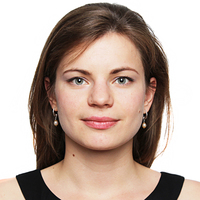
+49 7071 601 1709
zoia.katashinskaia@tuebingen.mpg.de

Regional Grant Office
<p><strong>Max-Planck Regional Grants Office Baden-Württemberg</strong></p> <p>The Max Planck Regional Grants Office Baden-Württemberg was established in December 2007 and is hosted by the MPI for Biological Cybernetics in Tübingen. Its mission is to support the participation of Max Planck scientists in national, international, and European Union funded research and related activities.</p> <p>The office provides information and expert advice on funding programmes and offers assistance with bid preparations as well as backup during third party funded contract preparations and project management.</p> <p>In addition, it serves as a clearing point between researchers and administrations at both local MPI and MPS Headquarters’ level, and as a regional information contact point. Importantly, the Regional Grants Office supplies young scientists with advice and continuous coaching in the field of Third-party funding driven active career development and profile building.</p> <p>A variety of programmes fund research of early career stages (PhD and Post-Doc fellowships) and more advanced profiles (independent research group funding, collaborative grants). The training portfolio includes regular information sessions or workshops on funding opportunities, project proposal planning, and an ERC interview training (for ERC interview candidates).</p> <p>Since 2010, the Regional Grants Office has gradually expanded its advice and assistance to the German funding programmes and fellowships of, among others, the Deutsche Forschungsgemeinschaft (DFG), the Bundesministerium für Bildung und Forschung (BmBF), and the Deutscher Akademischer Austauschdienst (DAAD). It now covers the comprehensive funding landscape of international and national funding programmes, including the most prominent private/public foundations.</p> <p><img alt="" src="/uploads/ckeditor/pictures/1701/content_Grafik_EU-Regionalb%C3%BCro-SAB-2021.jpg" style="width: 800px; height: 531px; border-width: 0px; border-style: solid;" title="" /></p> <p><meta charset="UTF-8" /></p> <p>The Max Planck Regional Grants Office Baden-Württemberg covers the MPI for Biological Cybernetics (Cyb), the MPI for Developmental Biology (DevB), and the Friedrich Miescher Laboratory (FML) in Tübingen; furthermore, the MPI of Immunobiology and Epigenetics (IBE) and the MPI for the Study of Crime, Security and Law (CSL), both located in Freiburg, as well as, on an occasional basis, the MPI for Solid State Research and the MPI for Intelligent Systems in Stuttgart/Tübingen. It offers regular on-site consultation in Tübingen and Freiburg im Breisgau.</p> <p>The Regional grants office is part of a larger initiative launched by the Max Planck Society in 2007 to provide adequate support to Max Planck Institutes across Germany. It also serves as a contact point which seeks to generate and disseminate best practice, to network with other Max Planck Regional grants offices and the Max Planck EU Office in Brussels, and to liaise with the National Contact Points from DFG, BmBF, the European Commission and other European institutions. The office was financed by start-up funding from the Max Planck Society's headquarters in the early phase (until 2010) and is now run by the Max Planck Institutes in Tübingen and Freiburg im Breisgau.</p>
No employees found
Robotics
<div> <p>We recommend that you contact us early on in the development of new projects, when we can discuss how the ZWE could be most useful and formulate a collaborative plan.</p> </div> <div> <h3>Facilities</h3> <p>The Robotics ZWE offices and labs are located in the 3N corridor of the MPI-IS Stuttgart campus, including:</p> <ul> <li>ADDITIVE MANUFACTURING - The field of additive manufacturing (“3D Printing”) continues to evolve and grow at an astonishing rate. The fundamental principle is the layered deposition of material to fabricate given three-dimensional geometry. In an effort to support the diverse prototyping needs of the institute, the Robotics ZWE offers full-service 3D printing using a wide variety of techniques and processes, including fused-deposition modeling (FDM), stereolithography (SLA), multi-jet modeling (MJM), multi-material printing, and more.<br /> </li> <li>CIRCUIT FABRICATION - Recognizing that the majority of embedded electronic systems require the integration of compact, surface-mounted components on either rigid or flexible substrates, we have assembled the equipment and expertise to rapidly design, fabricate, and test advanced circuitry.</li> </ul> </div> <div> <h3>Expertise & Capabilities</h3> <p>Mechatronics is the synergistic fusion of mechanical design, electrical engineering, embedded programming, and systems integration. The melding together of these complementary disciplines has made possible the vast majority of the technology that pervades our lives, from modern automobiles to smartphones and surgical robots. Such systems are, by their very nature, rather complex. With over 20 years combined experience in mechatronic design and prototyping, the engineers of the Robotics ZWE are well equipped to assist with the design and realization of a wide range of mechatronic systems</p> </div> <ul> <li>MECHANICAL COMPONENT DESIGN & PROTOTYPING <ul> <li>SolidWorks 3D CAD</li> <li>FEA simulation</li> <li>additive manufacturing</li> <li>subtractive prototyping</li> <li>composite-part design and fabrication</li> <li>custom polymer casting fabrication</li> </ul> </li> </ul> <ul> <li>ELECTRICAL CIRCUIT LAYOUT & PROTOTYPING <ul> <li>high-density surface mount design</li> <li>rigid and flexible printed circuit prototyping and fabrication</li> <li>multi-layer circuits</li> </ul> </li> </ul> <ul> <li>EMBEDDED SOFTWARE DEVELOPMENT <ul> <li>familiarity with all major microcontroller architectures (AVR, ARM, TI, Freescale, Microchip, etc.)</li> <li>proficient in a variety of programming languages (C/C++, Java, Python, Matlab, etc.)</li> <li>extensive experience with various communication protocols (I2C, SPI, USB, CAN, etc.)</li> </ul> </li> </ul>
Scientific Computing
<div class="col-md-5"><a class="fancybox" href="/uploads/ckeditor/pictures/876/content_scws.jpg" rel="group"><img class="img-stretch" src="/uploads/ckeditor/pictures/876/content_scws.jpg" /> </a></div> <div class="col-md-7"> <p>Our scientists have access to state-of-the-art High Performance Computing facilities. The in-house facilities include a cluster with CPU compute nodes and energy efficient GPU accelerators, and vast amount of storage. Our researchers can also make use of the Max Planck Computing and Data Facility located at Garching.</p> <p>CPU nodes in the in-house cluster are specially designed for the applications our researchers develop, many having 3TB of RAM and 192 cores each - ideal to run memory intensive scientific programs. The cluster also features more than 1100 GPU accelerators, including Nvidia H100s. The theoretical peak performance of the fast-growing cluster is more than 30 PetaFLOP/s (single precision).</p> <p>Our scientists work with large amount of data, and we have in-house storage systems with capacity of more than 3 Peta Bytes to address this need. The cluster runs a parallel file system to enable fast data access.</p> <p>The Max Planck <a href="http://www.mpcdf.mpg.de/" target="_blank">Computing and Data Facility</a> supports our high end computing needs. The supercomputer Raven has more than 100,000 CPU cores and more than 750 GPUs, making its peak performance more than 20 PetaFLOP/s.</p> <p>We have a motivated team that works with researchers to help them use the computing resources effectively and develop fast and scalable applications.</p> </div>
Software Workshop
<div> <div> <div> <p><img alt="" src="/uploads/ckeditor/pictures/1112/content_IBM.jpg" style="height:344px; width:512px" /> </p> <p><em>The Columbia Computer Center IBM Machine Room, about 1980. Photo: Bob Resnikoff.</em></p> </div> </div> </div> <hr /> <p>Our goal is to increase the impact of the research made at the Max Planck Institute for Intelligent Systems by</p> <ul> <li>creating innovative software solutions for scientific purposes, always following industry standards</li> <li>improving existing codes written by researchers (port to a new framework, optimization, parallelization...)</li> <li>disseminating expertise and promoting good practices in software development (wiki, reviews, trainings)</li> <li>assisting scientists to design, deploy, and maintain their software</li> <li>providing scientists with a state-of-the-art infrastructure for software development</li> <li>developing tools that improve the workflow of scientists</li> </ul> <p>Fields of expertise</p> <ul> <li>Programming languages: C++, Python, CMake, C#, Matlab, LaTeX, CUDA, bash, powershell</li> <li>Technologies: git, django, celery, Qt, PyQt, REST API, docker, Ansible, Kinect2, OpenCV, Caffe2, pytorch, iOS</li> <li>Tools: Confluence, Jira, Bamboo, Crucible, GitLab, download center</li> <li>Methodologies: Agile software development, sprints, daily scrums</li> </ul>
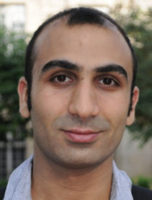
+49 7071 601 1756
raffi.enficiaud@tuebingen.mpg.de
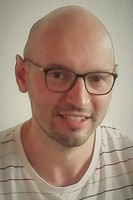
+49 7071 601 1852
jean-claude.passy@tuebingen.mpg.de
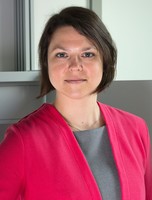
+49 711 685 81176
maria.wirzberger@ife.uni-stuttgart.de
Surgical Suites
<p>The surgical suites at our institute enable scientists to perform neurological research, levels ahead of veterenary hospital standards. Services to support surgery care in these areas are provided by our veterenary staff, an operating room technical team as well as equipment and supply coordinators. </p> <p>The surgical suites include two major animal surgical rooms with adjunct pre- and post-operative areas. The suites are equipped with operating lights and tables, as well as anesthetic, monitoring and surgical instruments. The area is accessible to authorized researchers and the veterinary staff 24/7. </p> <p>Our surgical support consists of people with specialized skills, committed to ensuring surgical investigation that is ethically safe and of the highest standards possible. </p> <p><img alt="" src="/uploads/ckeditor/pictures/1704/content_OR1.jpg" style="width: 800px; height: 445px;" /></p>
No employees found
Workshops
<h2 style="margin:0cm; text-align:start; -webkit-text-stroke-width:0px"><strong>The electronic workshop</strong></h2> <p style="margin:0cm; text-align:start; -webkit-text-stroke-width:0px"> </p> <p style="margin:0cm; text-align:start; -webkit-text-stroke-width:0px"><span style="font-size:medium"><span style="font-family:Calibri, sans-serif"><span style="caret-color:#000000"><span style="color:#000000"><span style="font-style:normal"><span style="font-variant-caps:normal"><span style="font-weight:normal"><span style="letter-spacing:normal"><span style="orphans:auto"><span style="text-transform:none"><span style="white-space:normal"><span style="widows:auto"><span style="word-spacing:0px"><span style="-webkit-text-size-adjust:auto"><span style="text-decoration:none">The electronic workshop consists of an engineer, technicians, a foreman and several skilled workers. Currently, three apprentices are being trained as electronics technicians for devices and systems.</span></span></span></span></span></span></span></span></span></span></span></span></span></span></span></p> <p style="margin:0cm; text-align:start; -webkit-text-stroke-width:0px"> </p> <p style="margin:0cm; text-align:start; -webkit-text-stroke-width:0px"><img alt="" src="/uploads/ckeditor/pictures/1699/content_ElectronicsWorkshop1.jpg" style="width: 800px; height: 446px;" /></p> <p style="margin:0cm; text-align:start; -webkit-text-stroke-width:0px"> </p> <h3 style="margin:0cm; text-align:start; -webkit-text-stroke-width:0px"><strong>The design lab</strong></h3> <p style="margin:0cm; text-align:start; -webkit-text-stroke-width:0px"> </p> <p style="margin:0cm; text-align:start; -webkit-text-stroke-width:0px"><span style="font-size:medium"><span style="font-family:Calibri, sans-serif"><span style="caret-color:#000000"><span style="color:#000000"><span style="font-style:normal"><span style="font-variant-caps:normal"><span style="font-weight:normal"><span style="letter-spacing:normal"><span style="orphans:auto"><span style="text-transform:none"><span style="white-space:normal"><span style="widows:auto"><span style="word-spacing:0px"><span style="-webkit-text-size-adjust:auto"><span style="text-decoration:none">The development laboratory is part of the electronic workshop. This group of dedicated technical personnel provides services in electronics design and development to support the research activities, especially the experimental groups. For this purpose, a wide range of hardware and software tools are used for the development work. The use of various computational models and circuit simulations significantly shortens the development period and allows faster integration into manufacturing.</span></span></span></span></span></span></span></span></span></span></span></span></span></span></span></p> <p style="margin:0cm; text-align:start; -webkit-text-stroke-width:0px"> </p> <h3 style="margin:0cm; text-align:start; -webkit-text-stroke-width:0px"><strong>The manufacturing division</strong></h3> <p style="margin:0cm; text-align:start; -webkit-text-stroke-width:0px"> </p> <p style="margin:0cm; text-align:start; -webkit-text-stroke-width:0px"><span style="font-size:medium"><span style="font-family:Calibri, sans-serif"><span style="caret-color:#000000"><span style="color:#000000"><span style="font-style:normal"><span style="font-variant-caps:normal"><span style="font-weight:normal"><span style="letter-spacing:normal"><span style="orphans:auto"><span style="text-transform:none"><span style="white-space:normal"><span style="widows:auto"><span style="word-spacing:0px"><span style="-webkit-text-size-adjust:auto"><span style="text-decoration:none">The manufactoring division of the electronic workshop is designed for prototype and small series production. By using a circuit board plotter with tool exchanger in combination with a laser-controlled circuit board line, circuit boards up to a size of 200 x 300 millimeters can be produced in-house. The production of printed circuit boards for small series is also no major concern. Using an automatic placement machine including a camera system, components can be processed banded, in bars or as loose bulk material. This facilitates component procurement and commissioning. The process is complemented by the use of a programmable two-zone soldering oven. This optimizes the brazing process, and the various preheating processes ensure homogeneous and thus stress-free joining of the components.</span></span></span></span></span></span></span></span></span></span></span></span></span></span></span></p> <p style="margin:0cm; text-align:start; -webkit-text-stroke-width:0px"> </p> <h2 style="margin:0cm; text-align:start; -webkit-text-stroke-width:0px"><strong>The precision engineering workshop</strong></h2> <p style="margin:0cm; text-align:start; -webkit-text-stroke-width:0px"> </p> <p style="margin:0cm; text-align:start; -webkit-text-stroke-width:0px"><span style="font-size:medium"><span style="font-family:Calibri, sans-serif"><span style="caret-color:#000000"><span style="color:#000000"><span style="font-style:normal"><span style="font-variant-caps:normal"><span style="font-weight:normal"><span style="letter-spacing:normal"><span style="orphans:auto"><span style="text-transform:none"><span style="white-space:normal"><span style="widows:auto"><span style="word-spacing:0px"><span style="-webkit-text-size-adjust:auto"><span style="text-decoration:none"><b><span lang="EN-US" style="font-size:14pt"><img alt="" src="/uploads/ckeditor/pictures/1700/content_WorkshopPic1.jpg" style="width: 800px; height: 447px;" /></span></b></span></span></span></span></span></span></span></span></span></span></span></span></span></span></span></p> <p style="margin:0cm; text-align:start; -webkit-text-stroke-width:0px"> </p> <p style="margin:0cm; text-align:start; -webkit-text-stroke-width:0px"><span style="font-size:medium"><span style="font-family:Calibri, sans-serif"><span style="caret-color:#000000"><span style="color:#000000"><span style="font-style:normal"><span style="font-variant-caps:normal"><span style="font-weight:normal"><span style="letter-spacing:normal"><span style="orphans:auto"><span style="text-transform:none"><span style="white-space:normal"><span style="widows:auto"><span style="word-spacing:0px"><span style="-webkit-text-size-adjust:auto"><span style="text-decoration:none">The precision engineering workshop comprises a team of 15 employees in total. They include master precision engineers, technicians, skilled workers and trainees.</span></span></span></span></span></span></span></span></span></span></span></span></span></span></span></p> <p style="margin:0cm; text-align:start; -webkit-text-stroke-width:0px"> </p> <p style="margin:0cm; text-align:start; -webkit-text-stroke-width:0px"><span style="font-size:medium"><span style="font-family:Calibri, sans-serif"><span style="caret-color:#000000"><span style="color:#000000"><span style="font-style:normal"><span style="font-variant-caps:normal"><span style="font-weight:normal"><span style="letter-spacing:normal"><span style="orphans:auto"><span style="text-transform:none"><span style="white-space:normal"><span style="widows:auto"><span style="word-spacing:0px"><span style="-webkit-text-size-adjust:auto"><span style="text-decoration:none">The range of activities covers complex technical planning and design of customer-specific individual solutions using CAD/CAM systems, operational manufacturing processes with conventional drilling, turning and milling machines, and 5-axis simultaneous milling. For additive manufacturing, the precision mechanics workshop has various 3D printers at its disposal. Small welding jobs can also be carried out using the TIG (tungsten inert gas welding), TAG (tungsten active gas welding) or electrode welding processes. Likewise, the workshop team assists scientists in creating a wide variety of setups by selecting the appropriate materials in terms of stability and functionality.</span></span></span></span></span></span></span></span></span></span></span></span></span></span></span></p> <p style="margin:0cm; text-align:start; -webkit-text-stroke-width:0px"> </p> <h3 style="margin:0cm; text-align:start; -webkit-text-stroke-width:0px"><strong>CNC production of precision components</strong><br /> <br /> <span style="font-size:medium"><span style="font-family:Calibri, sans-serif"><span style="caret-color:#000000"><span style="color:#000000"><span style="font-style:normal"><span style="font-variant-caps:normal"><span style="font-weight:normal"><span style="letter-spacing:normal"><span style="orphans:auto"><span style="text-transform:none"><span style="white-space:normal"><span style="widows:auto"><span style="word-spacing:0px"><span style="-webkit-text-size-adjust:auto"><span style="text-decoration:none">A central component of the precision mechanics workshop is a 5-axis CNC milling machine as well as two 3-axis CNC milling machines, one of which can be equipped with an additional fourth rotary axis. The maximum component size can be up to 1000 millimeters per workpiece. Even the smallest tolerances can be excluded. Depending on the material requirements, the most commonly used materials in CNC manufacturing are thermoplastics, various aluminum alloys and high-performance plastics such as PEEK, as well as various copper alloys and stainless steels.</span></span></span></span></span></span></span></span></span></span></span></span></span></span></span><br /> <br /> <strong>Additive manufacturing using 3D printers<span style="font-size:medium"><span style="font-family:Calibri, sans-serif"><span style="caret-color:#000000"><span style="color:#000000"><span style="font-style:normal"><span style="font-variant-caps:normal"><span style="font-weight:normal"><span style="letter-spacing:normal"><span style="orphans:auto"><span style="text-transform:none"><span style="white-space:normal"><span style="widows:auto"><span style="word-spacing:0px"><span style="-webkit-text-size-adjust:auto"><span style="text-decoration:none"> </span></span></span></span></span></span></span></span></span></span></span></span></span></span></span></strong><br /> <br /> <span style="font-size:medium"><span style="font-family:Calibri, sans-serif"><span style="caret-color:#000000"><span style="color:#000000"><span style="font-style:normal"><span style="font-variant-caps:normal"><span style="font-weight:normal"><span style="letter-spacing:normal"><span style="orphans:auto"><span style="text-transform:none"><span style="white-space:normal"><span style="widows:auto"><span style="word-spacing:0px"><span style="-webkit-text-size-adjust:auto"><span style="text-decoration:none">Additive manufacturing is a process in which computer-aided design can be used to create three-dimensional workpieces using appropriate 3D printers. At the institute, this manufacturing technology is particularly suitable for the production of brackets, molds, disposable electrode drives, and coilformers used in on-site MRIs.</span></span></span></span></span></span></span></span></span></span></span></span></span></span></span><br /> <br /> <span style="font-size:medium"><span style="font-family:Calibri, sans-serif"><span style="caret-color:#000000"><span style="color:#000000"><span style="font-style:normal"><span style="font-variant-caps:normal"><span style="font-weight:normal"><span style="letter-spacing:normal"><span style="orphans:auto"><span style="text-transform:none"><span style="white-space:normal"><span style="widows:auto"><span style="word-spacing:0px"><span style="-webkit-text-size-adjust:auto"><span style="text-decoration:none">Likewise, the workshop team supports the scientists in creating the individual measurement setup on site, by choosing the appropriate installation site in terms of necessary infrastructure and existing interferences. On the basis of various tests, suggestions are made to the scientist as to how the setup can be jointly created with suitable shielding in a neutral room.</span></span></span></span></span></span></span></span></span></span></span></span></span></span></span></h3> <p style="margin:0cm; text-align:start; -webkit-text-stroke-width:0px"> </p> <h3 style="margin:0cm; text-align:start; -webkit-text-stroke-width:0px"><strong>Work example: development and manufacture of a head coil</strong></h3> <p style="margin:0cm; text-align:start; -webkit-text-stroke-width:0px"> </p> <p style="margin:0cm; text-align:start; -webkit-text-stroke-width:0px"><span style="font-size:medium"><span style="font-family:Calibri, sans-serif"><span style="caret-color:#000000"><span style="color:#000000"><span style="font-style:normal"><span style="font-variant-caps:normal"><span style="font-weight:normal"><span style="letter-spacing:normal"><span style="orphans:auto"><span style="text-transform:none"><span style="white-space:normal"><span style="widows:auto"><span style="word-spacing:0px"><span style="-webkit-text-size-adjust:auto"><span style="text-decoration:none">Head coils ensure excellent imaging capabilities for neurological studies. They can be used in standing, sitting and lying positions. For the development and manufacture of a head coil that is used for experiments with strong magnets on human subjects, most of the development and manufacturing processes are handled in-house. </span></span></span></span></span></span></span></span></span></span></span></span></span></span></span><span style="font-size:medium"><span style="font-family:Calibri, sans-serif"><span style="caret-color:#000000"><span style="color:#000000"><span style="font-style:normal"><span style="font-variant-caps:normal"><span style="font-weight:normal"><span style="letter-spacing:normal"><span style="orphans:auto"><span style="text-transform:none"><span style="white-space:normal"><span style="widows:auto"><span style="word-spacing:0px"><span style="-webkit-text-size-adjust:auto"><span style="text-decoration:none">The coils are specially designed in terms of weight, shape and material properties for strong MRI magnets up to 14T. </span></span></span></span></span></span></span></span></span></span></span></span></span></span></span></p> <p style="margin:0cm; text-align:start; -webkit-text-stroke-width:0px"> </p> <p style="margin:0cm; text-align:start; -webkit-text-stroke-width:0px"> </p> <p style="margin:0cm; text-align:start; -webkit-text-stroke-width:0px"><img alt="" src="/uploads/ckeditor/pictures/1690/content_Helm.png" style="width: 602px; height: 800px;" /></p> <p style="margin:0cm; text-align:start; -webkit-text-stroke-width:0px"> </p>
No employees found

